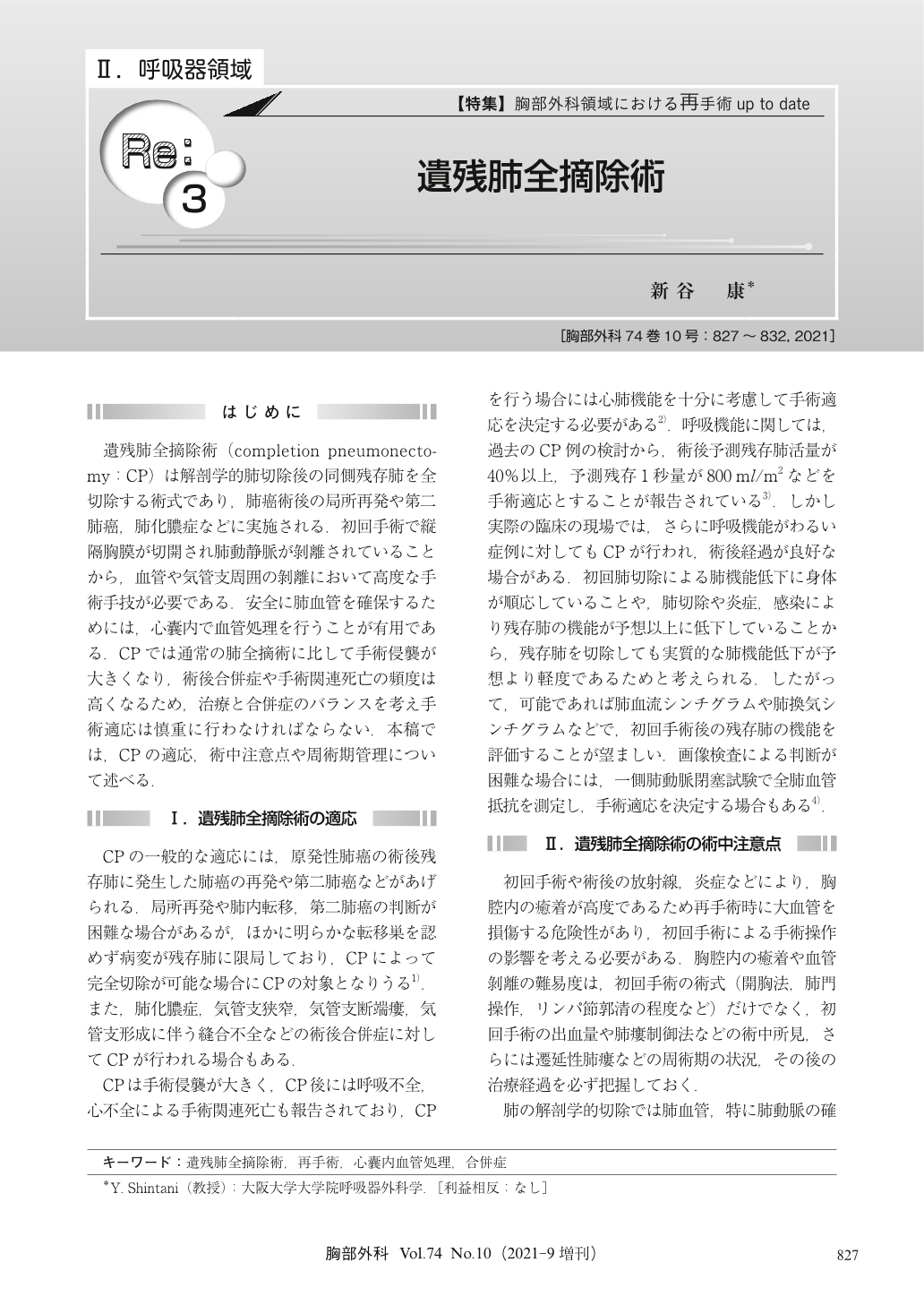Japanese
English
- 有料閲覧
- Abstract 文献概要
- 1ページ目 Look Inside
- 参考文献 Reference
遺残肺全摘除術(completion pneumonectomy:CP)は解剖学的肺切除後の同側残存肺を全切除する術式であり,肺癌術後の局所再発や第二肺癌,肺化膿症などに実施される.初回手術で縦隔胸膜が切開され肺動静脈が剝離されていることから,血管や気管支周囲の剝離において高度な手術手技が必要である.安全に肺血管を確保するためには,心囊内で血管処理を行うことが有用である.CPでは通常の肺全摘術に比して手術侵襲が大きくなり,術後合併症や手術関連死亡の頻度は高くなるため,治療と合併症のバランスを考え手術適応は慎重に行わなければならない.本稿では,CPの適応,術中注意点や周術期管理について述べる.
A completion pneumonectomy (CP) is a procedure used to remove remaining lung tissue following an operation previously performed for anatomical resection. During the initial operation, manipulation of the pulmonary artery and vein during incision of the mediastinal pleura can influence dissection of the hilum vessels and bronchus in the mediastinum, causing severe adhesion and tissue fragility, thus making a CP difficult to perform. As compared to a standard pneumonectomy, it is considered to be a more challenging technical procedure, and associated with increased operative mortality and morbidity. Intrapericardial manipulation of pulmonary vessels by early opening of the pericardium is safe and effective in cases when difficulty with tearing of the hilar pulmonary vessels is encountered. CP may be a reasonable option for lung cancer cases, including postoperative lung cancer recurrence, second primary tumors, or metastasis from tumors in other organs occurring after a previous lobectomy done for treatment of malignant or benign disease. However, it should only be performed in carefully selected cases, in which the potential oncological benefits outweigh the surgical risk. In this paper, indications for CP and the procedures employed, as well as perioperative management are discussed.

© Nankodo Co., Ltd., 2021


